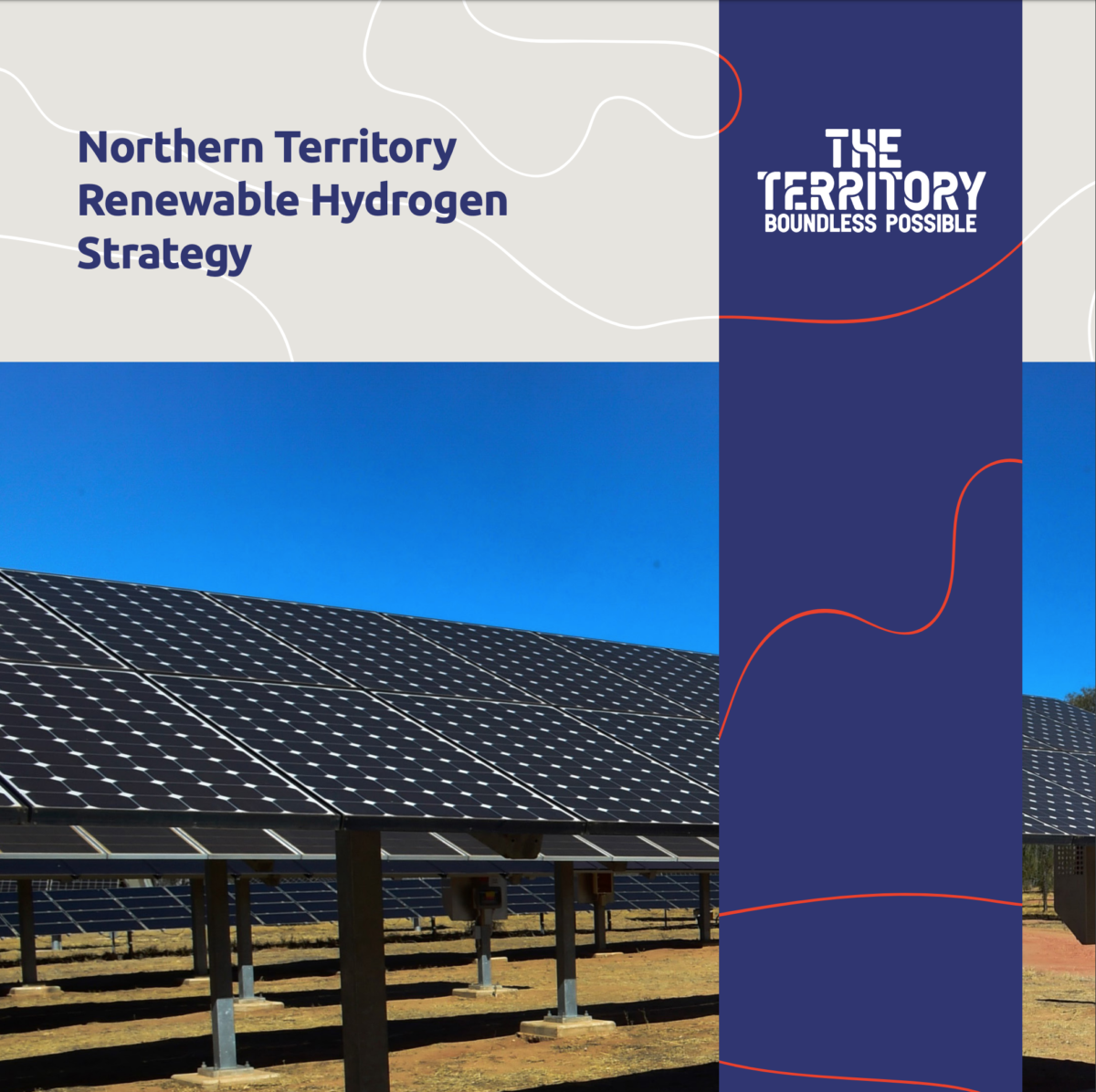The Northern Territory Government on Friday released a Renewable Hydrogen Strategy with an emphasis on turning its “natural competitive advantages into clean, permanent local jobs”.
It cites among those advantages: available land with high levels of irradiance: proximity to export facilities and therefore regional markets such as Korea, China and Japan; expertise and workforces already skilled in energy production and export — think Icthys and Darwin LNG plants; and innovation hubs such as Charles Darwin University’s various energy research centres; and the Desert Knowledge Australia Solar Centre, which it describes as the largest multi-technology solar demonstration facility in the southern hemisphere.

Image: Northern Territory Government
“We can be a leader in the world transition to renewable hydrogen and this strategy provides the vision and the plan to make it happen,” said Dale Wakefield, the Territory’s Minister for Renewables, Energy and Essential Services.
The announcement of the Strategy comes off the back of the NT’s publication last week of its final Climate Change Response, which formalised its commitment to net-zero emissions by 2050, alongside the Territory’s interim renewable energy target of 50% by 2030.
Minister Wakefield tied it all together, saying, “The strategy complements our record of delivering more renewables, taking real action on climate change and the strongest protections for water and our environment the Territory has ever seen.”
The Renewable Hydrogen Strategy recognises that a sustainable source of water is one of the key considerations in planning for hydrogen generation on a large scale, but notes “hydrogen can be produced from various sources of water, including waste water and sea water.”
More significantly, it identifies the falling cost of battery energy storage technology as a competitive factor to the viability of hydrogen as a storage mechanism, saying “near universal adoption of batteries for energy storage could delay the potential for wide-scale adoption of hydrogen”.
Hydrogen exports may be a stretch goal
Although the National Hydrogen Strategy, endorsed by the COAG Energy Council in December 2019, found global demand for hydrogen could increase rapidly after 2030 to 300 mtpa by 2050; a low-demand scenario showed a more subdued growth to around 100 mtpa.
In fact, a report by The Australia Institute (TAI), released prior to the COAG meeting indicated that anticipated demand for hydrogen in overseas markets had been grossly overstated in the national strategy, by a factor of about 11 in the case of Japan, and similarly for Korea when compared with that country’s government plans.
BloombergNEF also recently published a report which emphasised the poor economic case for exporting hydrogen.

Image: Northern Territory Government
That said, the Territory strategy acknowledges the need for strategic investment and identifies a number of opportunities for early adoption of “modest-scale” renewable hydrogen within the NT itself, including “fertiliser production, long haul heavy vehicle transport, and in stationary electricity production in remote power systems”.
It says the expense of diesel-fired generation in remote areas in particular could incentivise early adoption of hydrogen as high-density storage in support of solar generation.
Five ways for government and industry to work together
The strategy ends on a five-point plan that integrates with the Territory target of net-zero emissions by 2050:
- More detailed planning and integration with Territory economic development strategies, including harnessing “the Territory’s energy production and export experience”, and working with existing industries such as transport, mining and industrial manufacturing to understand opportunities.
- Investigating how to optimise resources and infrastructure to facilitate hydrogen industry development, including incorporating potential hydrogen demand in the Territory Government’s water strategies.
- Preparation and planning for the long-term aspiration of hydrogen export, such as promoting the Northern Territory Renewable Hydrogen Strategy to existing and prospective trade partners. This stage is also earmarked for development of pilots and case studies, that will “inform and provide opportunities for hydrogen researchers and technology demonstrators”.
- Support of innovation, encouraging trials such as application of hydrogen technologies in remote area power systems and commercial and long-distance transport. Plus establishment of a Hydrogen Working Group and an Industry Reference Group, to revise and implement the strategy.
- Development of responsive regulations and standards to support hydrogen safety and industry development and address any unnecessary barriers to development of hydrogen-ready capabilities. This includes developing “technology-neutral reliability and security services procurement frameworks for the Territory’s regulated electricity systems” and considering “the potential for grid-connected electrolysers to provide these services”.
This content is protected by copyright and may not be reused. If you want to cooperate with us and would like to reuse some of our content, please contact: editors@pv-magazine.com.









By submitting this form you agree to pv magazine using your data for the purposes of publishing your comment.
Your personal data will only be disclosed or otherwise transmitted to third parties for the purposes of spam filtering or if this is necessary for technical maintenance of the website. Any other transfer to third parties will not take place unless this is justified on the basis of applicable data protection regulations or if pv magazine is legally obliged to do so.
You may revoke this consent at any time with effect for the future, in which case your personal data will be deleted immediately. Otherwise, your data will be deleted if pv magazine has processed your request or the purpose of data storage is fulfilled.
Further information on data privacy can be found in our Data Protection Policy.